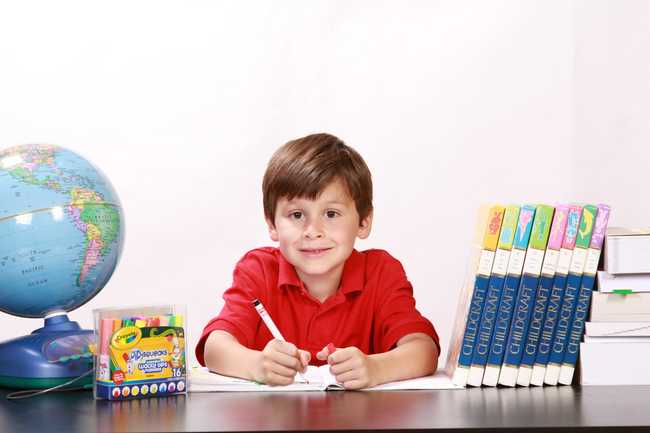
Has your child been diagnosed with autism? Do you suspect that your child may have autism? If so, you might be curious as to how autism affects child development.
Fortunately, we have the information you’re looking for. In this blog post, we’re going to cover not only the effects of autism on childhood development but different treatments (such as ABA therapy) that are available as well.
Autism’s Impact on Childhood Development
Autism impacts childhood development in a wide variety of ways. Some of its most prominent influences include the following.
Trouble Reading Non-verbal Social Cues
One of the defining characteristics of autism is trouble reading non-verbal social cues. So, if someone were to, say, wince while speaking, an autistic child might have trouble understanding that the person was conveying pain or discomfort.
This can create challenging situations in relationships, as the autistic child can have trouble communicating in a natural way. As a result, he or she can come across as awkward to others.
Difficulty Concentrating
Sensory overload is one of the primary components of an autism diagnosis. When an autistic child suffers from sensory overload, he or she can feel as though everything is moving at 100 miles per hour. This includes everything from sounds to sights and more.
As a result, autistic children often have trouble concentrating. Their minds can become so overloaded with information that they aren’t able to focus on the task at hand.
Emotional Outbursts
As was noted, autistic children are prone to sensory overload. Unfortunately, this doesn’t just make it difficult to concentrate. It also leaves the child feeling stressed and frustrated.
What happens when a person is chronically stressed and frustrated? He or she has emotional outbursts. As such, it’s not uncommon for an autistic child to become exceedingly angry or sad or anxious at a moment’s notice.
Isolation
One of the most troubling effects of autism in children is that it creates isolation. In other words, the child becomes distanced from his or her peers and can have a difficult time making and/or keeping friends.
This is often brought on by others who see the autistic child as awkward. They feel uncomfortable around the child and, as a result, end up pushing them away.
On the other hand, some autistic children isolate themselves. In some cases, this is due to the stress that social interaction brings upon them. In other cases, it’s because past experiences have resulted in reduced self-esteem.
Autism Treatment Procedures
There are a number of treatments available to help combat autism’s effects. These treatments include the following.
ABA Therapy
ABA therapy is the crown jewel of autism treatment. It stands for Applied Behavior Analysis and it is designed to enhance the patient’s social, communication, and learning skills.
This form of therapy involves observing the patient and then devising a plan to help him or her combat specific problems. It’s different for every patient, as every patient is bound to have different experiences and behaviors.
ABA therapy is a long-term treatment that entails changing behaviors slowly over time. It’s dependent on positive reinforcement and is aimed at getting the patient to feel good about the changes that he or she is experiencing.
This therapy is best started between the ages of 3 and 5. Note, though, that it can be beneficial at any age, and could conceivably be used for the rest of a person’s life if desired.
Floortime
Another treatment method for autism is floortime. This is a fairly simple treatment in which an adult gets down on the child’s level and engages in playing with the child. The goal here is to accommodate the child’s form of communication and let him or her take the lead in the play session.
Floortime is important, as it helps the child practice forming emotional bonds. It also assists in helping the child to understand nuanced, non-verbal communication.
When practicing floortime, you should be in a calm and quiet room. You should be trying to make eye contact with the child and should be responding to his or her cues (not the other way around).
Speech Therapy
Autistic children are often lagging behind in their ability to speak works. If this is the case for your child, he or she could potentially benefit from speech therapy.
Speech therapy involves the repeated practice of verbal, non-verbal, and social communication patterns. It’s personalized for each patient and is focused on subtle but steady improvement.
Not only does speech therapy help a child to form words, but it also helps that child to express those words with the right expression and cadence. In some instances, it can even involve the strengthening of the muscles in the jaw, mouth, and neck.
Relationship Development Intervention
The last treatment we’re going to discuss is relationship development intervention. This is a form of treatment that focuses on social and emotional interaction. It’s generally facilitated by the child’s primary caretaker, who is trained by a professional therapist.
This form of treatment involves focusing on small elements of communication, one piece at a time. So, it might start by focusing on, say, non-verbal communication. The primary caretaker might make a concerted effort to communicate with the child through facial expressions and subtle body cues.
Once the child picks up on these, you might start to integrate some simple verbal communication. This will blossom into complex verbal communication, which will turn into group communication, and so on and so forth.
Counteract the Impact of Autism With ABA Therapy
As you can see, autism can have quite an effect on childhood development. As such, if your child has autism, you’re advised to enter him or her into treatment as soon as possible.
Interested in utilizing ABA therapy, in particular? If so, we here at Path2Potential have you covered. Our specialists are well-versed in providing this beneficial therapy and will do everything necessary to help your child progress.
Contact us now to enroll your child!
